Who We Are?
Our Mission
Blue Sanctuary is an ideology centered around protecting vulnerable and important marine areas in Cuba.
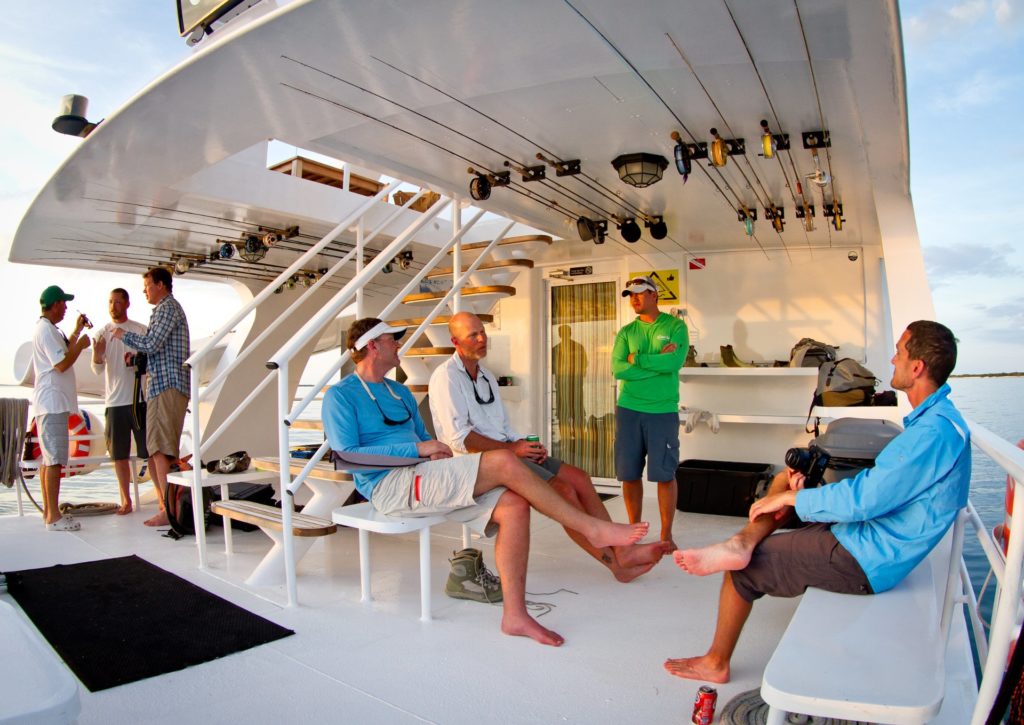
We run low impact programs and projects in marine parks offshore of the Cuban coasts. Our first goal is to show humanitarian travelers and researchers this paradise while working in management plans and strategies to keep this wonderful place untouched as if we’ve never been there. This obsession with marine life, environmentalism, research, safety and conservation is reflected in all that we do; continually working to minimize any negative impact of our activity. The marine parks of Cuba, our Blue Sanctuaries are wonderful places, both in and out of the water and are meant to be seen and experienced in a participatory and collaborative manner. We are privileged to be there and it’s our responsibility to keep it safe for future generations.
Our History
The establishment of Marine Protected Areas (MPAs) in Cuba began in 1996 after years of thorough study from both Cuban and international organizations surveying the importance of these vulnerable coastal areas. However, the ideas and principles of the MPAs began long before 1996. In the 1960s, 70s and 80s there were numerous proposals made, studies orchestrated, and workshops conducted in an effort to better understand the significance of these locations. This breadth of research and depth of knowledge surrounding these soon to be MPAs catalyzed the decision among the governmental ministries within Cuba to declare and sign into law the decrees protecting these pristine areas in 1996.
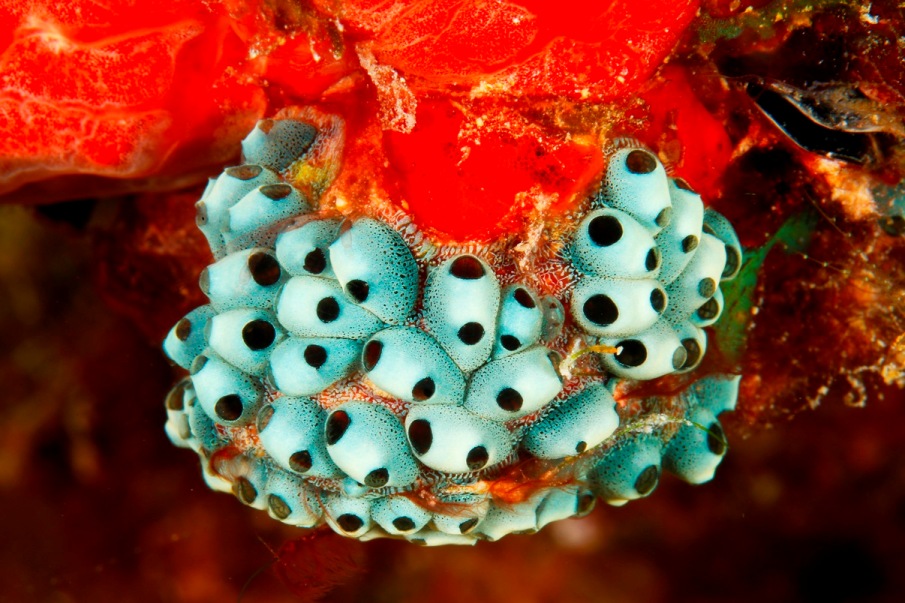
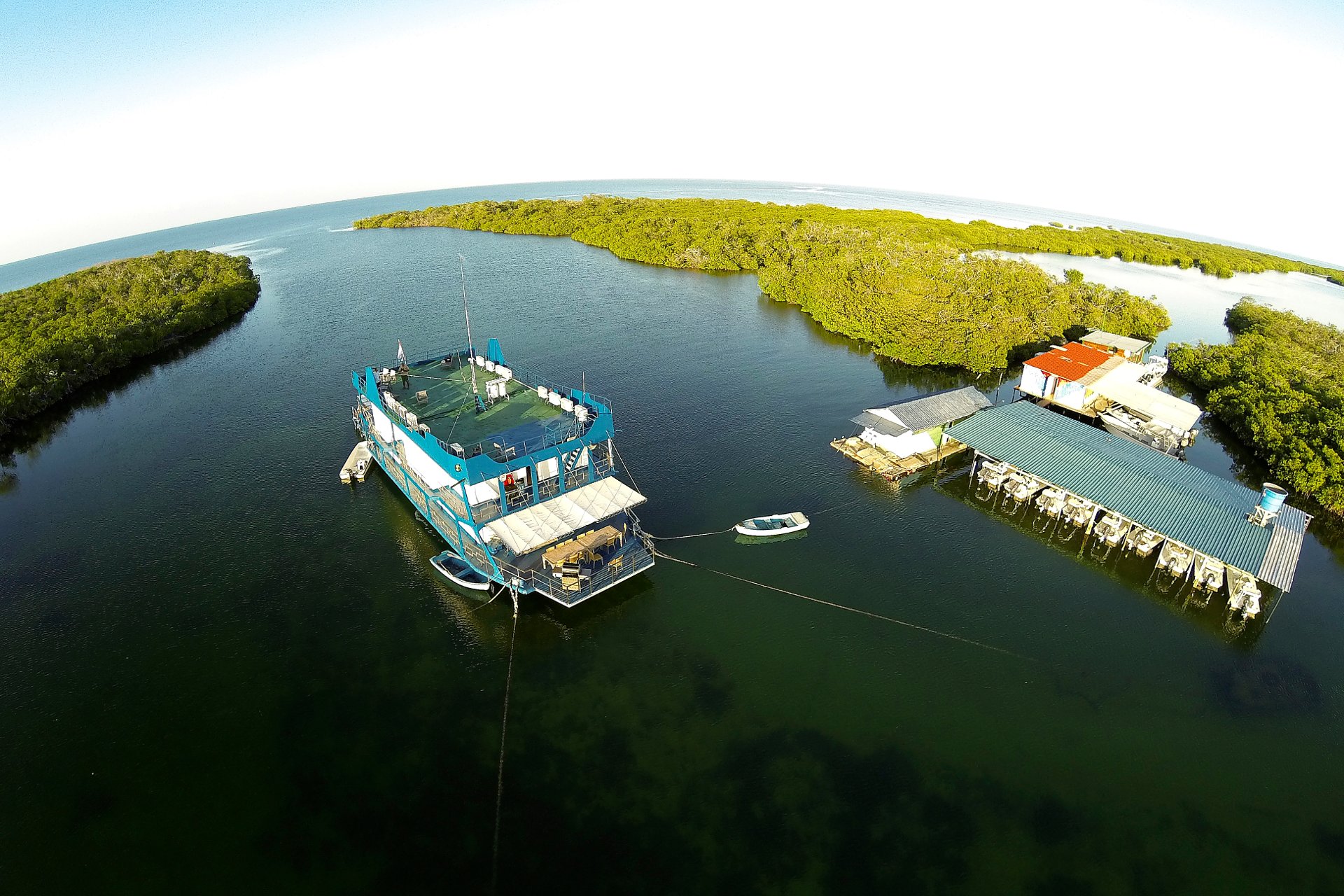
The MPAs are designated as “Zones under Special Regime of Use and Protection”. This means that some areas are utilized for particular levels of resource extraction and utilization, such as the management of a sustainable fishery, while others are strictly no-take preserves. The level to which these areas are conserved correlates directly with the vulnerability of the habitat and wildlife within. Those areas of the greatest ecological importance, maintaining the highest levels of biodiversity, while having the most outstanding cultural values associated with the environment are granted the strictest levels of protection as a marine sanctuary or national park. A full 25% of the Cuban insular shelf is under this multi level protection system with more area proposed for the future. This represents a massive swath of protected pristine coastline and marine habitat that is exceptionally important not only for Cuba but also the rest of the Caribbean.
Upon its legal establishment in 1996 and the following years, Jardines de la Reina fishing reserve, supported the incredible recovery and growth of fish and wildlife populations within and surrounding the protected area. The permanent fishing closure of this reserve along with the increased surveillance and enforcement by local guides and supporting governmental organizations, has created a strong model of sustainable conservation in Cuba. Due to the success of this management structure, Jardines de la Reina was declared a National Park in 2010. This change increased the total protected area to 217,036 hectares representing the largest marine park in Cuba and the most important area for marine and reef biodiversity in the Caribbean.
The environmental project started in Jardines de la Reina has created a model that is now extended to many other vulnerable coastal marine habitats within Cuba. Cienaga de Zapata, Isla de Juventud, Cayo Largo, Jardines del Rey and Cayo Cruz have all benefited from these increased levels of protection and sustainable development as set forth in the partnerships between Avalon, Fly Fishing The Run, the Cuban government, and numerous international scientific and research organizations. Furthermore, these ongoing efforts have had an exponentially positive effect on local cultures, economies, and livelihoods connected to the marine parks. The humanitarian impact has been profound, and due to the success of these MPAs and the associated sustainable economies, Cubans now have greater opportunities to make a living and build connections with people from all over the world. This increased contact surrounding these MPAs is ultimately the conduit in which this sustainable conservation and environmental project model will spread worldwide having lasting impacts on other vulnerable marine areas and the communities that rely on them.
WHAT WE DO?
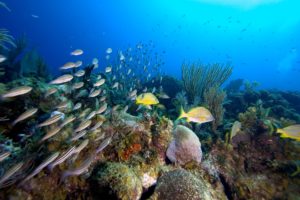
Conservation
The Republic of Cuba is an incredibly rich country in environmental wealth. With many decades of underdevelopment and the general lack of coastal infrastructure and industry, we are able to experience completely intact marine, coastal, mangrove and reef ecosystems as they have existed for eternity.
These areas are the most susceptible to exploitation and change; therefore, with a unique perspective, sustainable practices, and lots of support, we can retain these places in their fullest expression. These protected keystone ecosystems are intricately connected with the rest of the Caribbean creating a positive biosphere of influence and forward thinking model for the rest of the world to see and benefit from.
The primary goal in these efforts throughout Cuba is to promote enriching experiences and scientific understanding of natural areas by both the academic community and the general public. The breadth of research that has been conducted throughout all of the marine parks and natural reserves in Cuba has shown that the most important and biodiverse assets need the most assistance in conservation due to their natural vulnerability. These unique environmental preserves must also be visible to both Cubans and the international public, because without a formal recognition of conservation status then they will never be able to gain the support they need to remain protected. It is through the multitude of partnerships between the Cuban government, international organizations, scientific entities, and experiential sporting operations which fosters a high level of humanitarian collaboration in these natural areas creating a environmental project supporting this dynamic web of conservation.
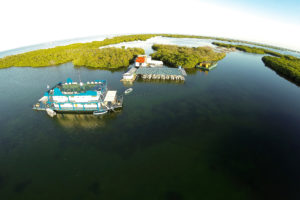
Protection and Enforcement
Conservation is a wonderful idea in theory, however it must be effectively and consistently implemented with a viable protection and enforcement system. Historically, across the world, it has been difficult to patrol large swath's of natural preserves day in and day out solely in the name of pure conservation.
Countries implementing these systems are often short on resources and personnel willing to engage in this sort of work. Occasionally, there is a success story where the ideological support, financing, community values, and infrastructure coalesce to create an effective system for protection; but, they are too few and far in between. In Cuba, there is a unique opportunity to reinvent the wheel when it comes to conservation, protection and enforcement. The centralization of resources and ideals in addition to the general lack of competing views of from various stakeholders has allowed for a new and innovative model to be implemented.
Since 1992, a multitude of public and private entities have worked in partnership with governmental organizations to develop a system of sustainable use and protection within the marine parks of Cuba. After years of careful study, these entities selected the areas that were not only the most vulnerable and in need of protection, but also those that showed the highest potential for operating a sustainable series of environmental projects and marine based research initiatives. In the following years, after significant investments, training, and development, the current system of protection became a reality. While the Cuban guides and biologists are traveling throughout the parks with humanitarian visitors and researchers, they are also keeping a watchful eye to their surroundings. When they notice an illegal encroachment, poaching, netting, or any other sort of negative impact on the protected area, they then radio the enforcement team to further remove this threat. The enforcement team is small, with limited dedicated vessels and tools to combat these sorts of threats on their own. Therefore, it is essential to employ the guides and biologists, sharing the bounty of these areas in a sustainable manner with the humanitarian visitors and researchers, while also surveying the entirety of the marine park. Without international humanitarian visitors and Cuban guides interacting in this manner, the protection system would not be as strong as it is today and only a fraction as effective.
In the future there are plans to build more dedicated research and protection vessels and implement high tech solutions to create a comprehensive and self sustaining protection and enforcement program in each marine park. These improvements take years of time and significant investments, but the objective will be the same as it is today; creating a livelihood for the local communities, while protecting the natural resources and creating a model of conservation to share the world over.
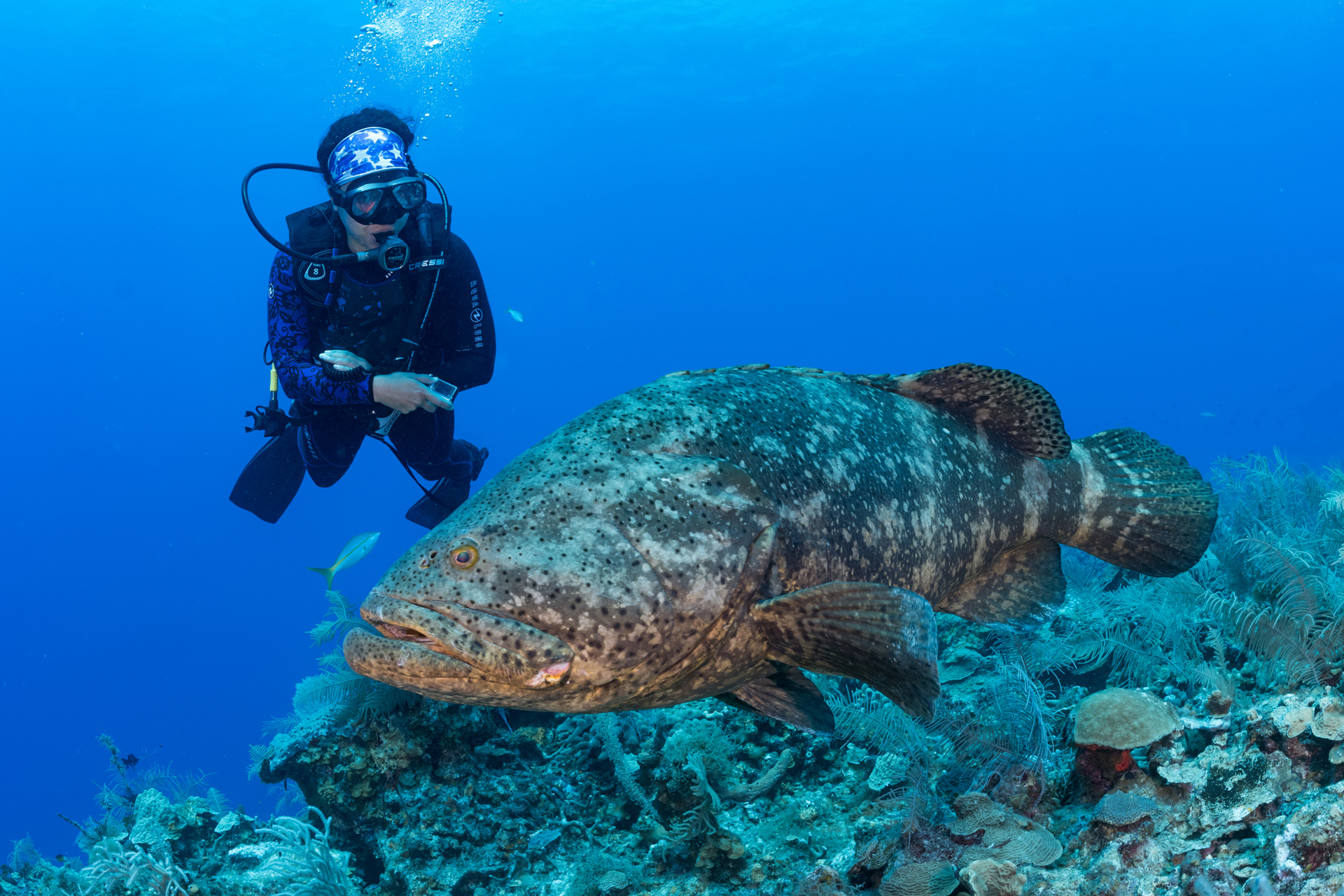
Sustainable Use
Scientific analysis in the marine parks of Cuba is the foundation on which all operations stand. Without ongoing scientific and research efforts, the true scope of ecosystem capacity and impacts would not be fully understood and valued.
Furthermore, the research and partnership across sectors created by this marine based environmental project is essential in strengthening the pathways in which these protected and utilized coastal ecosystems meet environmental, social, and economic goals.
Before the legal decrees in the mid 90s, many of Cuba’s most important fisheries and reefs were in decline from over harvesting and mismanagement. Once these locations were designated as marine parks and properly protected, the numbers, size and variety of fish and flora species rebounded exponentially. The resilience of these ecosystems became apparent, but their fragility remained. The stewards within these areas formally recognized this vulnerability and have taken extreme measures to build a fully sustainable system placing the welfare of the environment at the forefront of its mission. Actions such as reduced fuel consumption, catch and release fly fishing, rotational use systems, no-take sanctuary designations, reducing plastics, grey water recycling, and limiting visitors have made significant positive impacts for the efficiency of the programs and the health of the environment. This is a phenomenal opportunity to create a mutually beneficial environmental program in the marine parks through science based innovations while returning the benefits back to the ecosystem and the local communities.
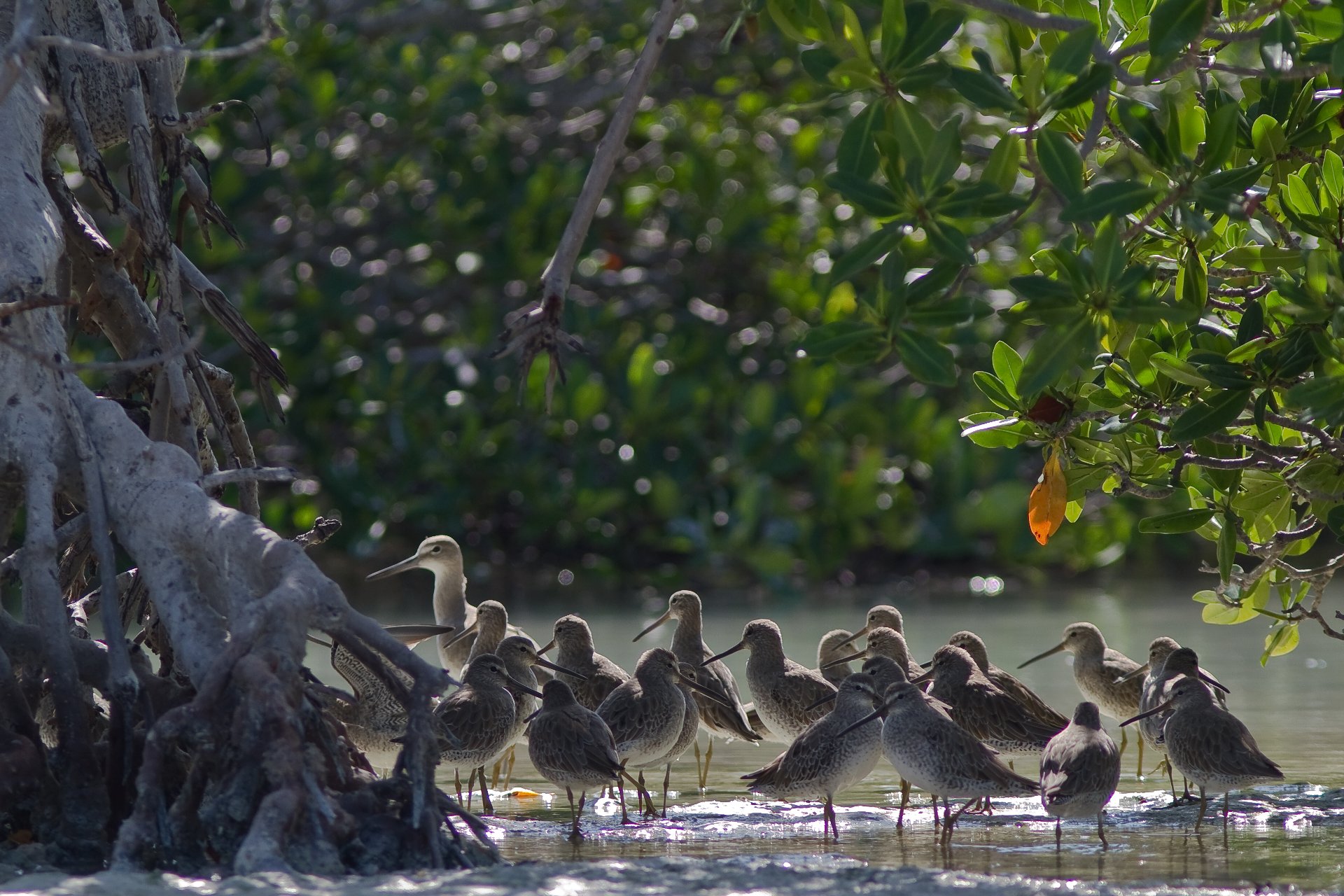
Community Benefits
Opportunities for Cubans are few and far between, especially in the countryside and in small communities. Many Cubans are fleeing their homes and leaving their families for the city in hopes of making a living beyond what is minimally allotted to them by the government.
Furthermore, for those remaining in isolated fishing communities and coastal towns, the prospects of livelihood are low beyond exploitative practices. The subsistence and unsustainable commercial fishing practices that these people turn to directly and negatively effects the health of fisheries and coastal-marine ecosystems. This has been the case for decades in many areas surrounding Cuba and it has had a massive impact on the fisheries. Nevertheless, as part of this comprehensive plan to conserve and protect these vulnerable marine parks, it is clear that the local communities must be engaged in this effort. By providing an opportunity to guide and care for international humanitarian visitors while in these marine parks, the Cuban people now have a sustainable opportunity to make a living while learning new vocational trades and expanding their world view along with their literacy skills. As an example, through proper training, a former trawler can become a yacht captain. A net fishermen learns new techniques and is now a world class fly fishing guide practicing catch and release. The former spear fisherman, so adept in the underwater world, has now become a scuba diving instructor; leading clients to these beautiful areas, but leaving the fish to happily exist while protecting the life of the coral reef as if it were their very own.
Even further, the impact of this transition to sustainable practices has wider reaching benefits on the local town and associated communities. The excess profits from these operations are reapplied in local infrastructure, schools, medical supplies, and training programs to name a few. The children now want to learn multiple languages in school and become marine biologists so they can spend their careers on the water guiding visitors to experiences of a lifetime. Slowly but surely, the communities surrounding these protected areas have given their full support and confidence in this sustainable model of conservation and forward progression. It is essential that these programs integrate and empower these communities in order to prosper and proliferate throughout the rest of Cuba and become a humanitarian model to be utilized throughout the rest of the world.
Where we work?
The National System of Protected Areas of the Republic of Cuba, has proposed, after detailed studies on the values of the biodiversity of the country, to establish the areas of greatest ecological, social-historical-cultural relevance of the nation. This is to guarantee the conservation and the sustainable use of the Cuban biodiversity, considering it an objective, prioritized within the National program of Environment and Development. It is also to show commitment of the Cuban State to dedicate part of the Convention on biological diversity. This system is integrated by 236 units, 79 of them protected areas of national importance, and the rest considered protected areas of local importance.
CUBA
Key Facts
- Location: Northwest Caribbean.
- Time GMT: – 5 (GMT – 4 from last Sunday in March to last Sunday in October.)
- Area: 110,922 sq km (44,218 sq miles).
- Length: 1200 kms
- Width: 32-200 kms
- Population: over 11 120 000 inhabitants.
- Population Density: 102 persons/sq km.
- Capital: Havana
- Population: 2.2 million (2006)
Geography
The Republic of Cuba is an archipelago in the Caribbean Sea, close to the entrance of the Gulf of Mexico. The country consists of the main island of Cuba, the largest in the Caribbean, the Isle of Youth, and some 4195 islets and keys.
It is the Greater Antilles group, lying 145km (90 miles) south of Florida. A quarter of the country is fairly mountainous. West of Havana is the narrow Guaniguanico mountain range, rising to 750m (2,461ft), divided into 2 main parts: Sierra de los Organos in the westernmost part of the island and Sierra del Rosario in the east. The Central part of Cuba is located the Guamuaya, rising to 1,100m (3,609ft.) encircling the port of Santiago and next largest to Garnma and Guantanamo provinces, are the rugged mountains of the Sierra Maestra, the highest peaks being 1974 meters. A quarter of the island is covered with mountains, forests of pine and mahogany.
History
Cuba was first discovered by Christopher Columbus on October 27th, 1492. For a man who had seen countless tropical islands, he was extremely impressed with Cuba and said ¨it is the most beautiful land human eyes have ever seen¨. After its discovery, the island was quickly colonized by the Spaniards, at the expense of the local aboriginal population, and by the sixteen hundreds, the first seven settlements: Baracoa, Bayamo, Trinidad, Sancti Spiritus, Puerto Principe and San Cristobal de la Habana had been founded.
By the nineteenth century, the Cuban population had become so distanced from their cousins in Spain that a movement began for independence from Europe.
The first war of independence began on October 1868 and was led by Carlos Manuel de Cespedes, ¨the father of the country¨. After ten years of fighting, the struggle ended in defeat.
The second attempt started on February 24th, 1895, and was led this time by Jose Marti who is considered the national hero of the country. He founded the Cuban Revolutionary Party and by 1898 victory was within sight. However, the US Government intervened, declared war on Spain, and after Spain was defeated kept the Cubans from attaining power.
The Republic was declared on May 20th, 1902, and was followed by a long period of economic and political dominance by the US that lasted until January 1st, 1959, when the Revolution finally triumphed. This was after several years of fighting in Sierra Maestra Mountains near Santiago and an underground struggle in the cities that finally toppled the Batista government on New Year’s Eve.
Government
The Republic of Cuba is one of the last bastions of socialism, and the people exercise their power through the Municipal, Provincial and national Assemblies. Raul Castro is the President of the Council of Ministers and has been the general Secretary of the Cuban Communist Party since 2008.
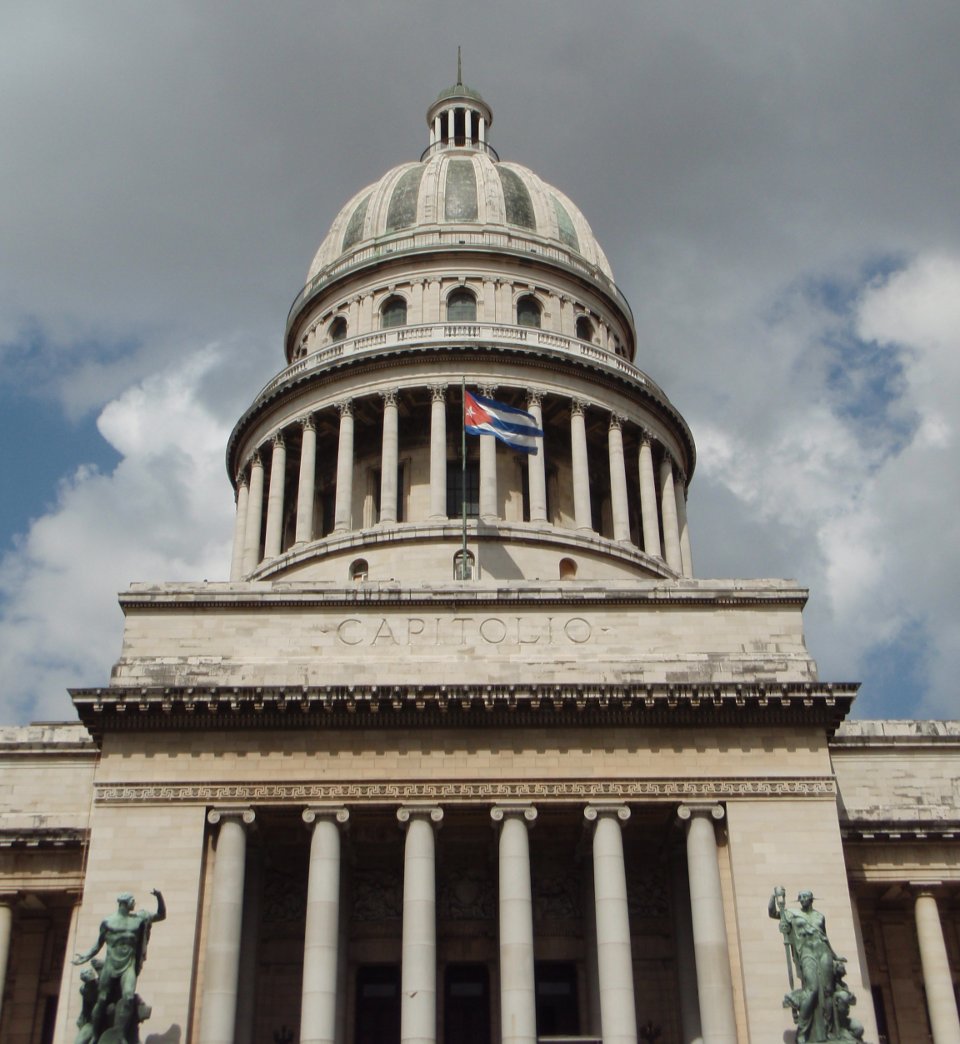
Uses and customs data
Language
The official language is Spanish, although many Cubans have studied either English, French, German or Russian.
Religion
In Cuba, no specific religion prevails over others.
Health
Cuba´s welfare state is the envy of its Latin American neighbors. Medical care is essentially free for Cubans and the population has the highest life expectancy in the third world (77 years) and the lowest infant mortality rate; about the same as New Zealand.
Education
The government provides all education, from day-care centers to college and free books.
Ethnic Background
Most Cubans are of a mixed race. Criollos (over 65%) are of European descent, Mulatos (25%) are a fusion of European and African descent. Moreno (10%) are of pure African descent and finally a small percentage of Spanish and Chinese.
The Media
Television
On Cuban TV, there are 5 channels. They broadcast in the morning and then from mid afternoon, showing mostly official news, documentaries and some soap operas mainly from Brazil which involve a lot of shouting and drama. Sports events such as Baseball, Boxing, Art and Music shows and vast number of films in English.
Radio
Cuban radio stations broadcast 24 hours a day and have some British links. There is a tourism station called ¨Radio Taino¨ on 1160 Hz AM. The best time to receive the BBC World Service is early in the morning on short-wave radio.
Press
• Papers are in Spanish, although the Communist Party daily newspaper, Granma, publishes a weekly edition, called Granma International, in English, German, Portuguese and French.
• There is also a fortnightly international newspaper, Prisma, published in Spanish and English.
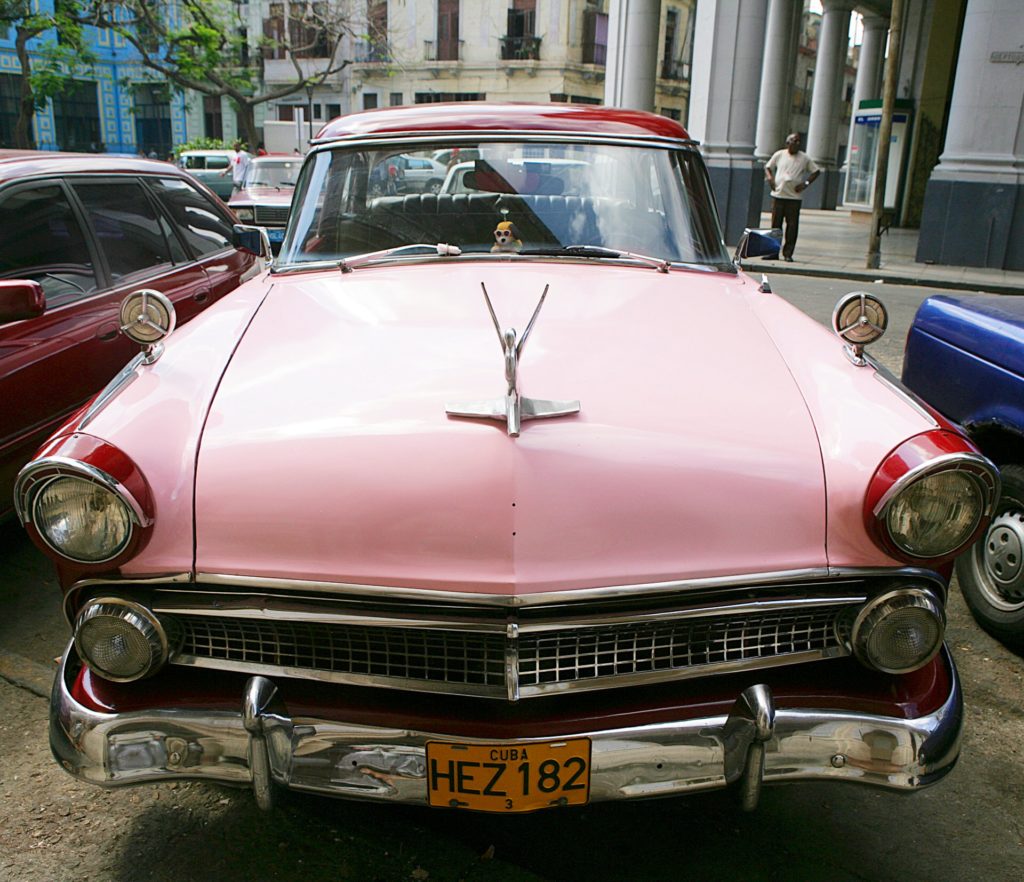
Enviroment
The Cuban government has formed several agencies to protect the environment. Among them are the National Parks Service, the National Commission of Environmental Protection and Rational Use of Natural Resources (1977), the National Environmental Education Program, the Academy of Sciences of Cuba, and the National Commission for the Protection of the Environment and for Conservation of Natural Resources. As of 2000, Cuba’s most pressing environmental problems were deforestation and the preservation of its wildlife. The government has sponsored a successful reforestation program aimed at replacing forests that had gradually decreased to a total of 17% of the land area by the mid-1990s.
Endangered species in Cuba include the Cuban solenodon, four species of hutia (dwarf, Cabera’s, large-eared, and little earth), two species of crocodile (American and Cuban), and the Cuban tree boa. In 2001, nine mammal species in a total of 31 were considered threatened. Thirteen bird species in a total of 137 were also threatened. Seven types of reptiles of 105 were endangered, along with 834 plant species out of a total of 6,000-plus. The ivory-billed woodpecker, Cuban red macaw, Caribbean monk seal, and Torre’s cave rat have become extinct.
The National System of Protected Areas of the Republic of Cuba, has proposed, after detailed studies on the values of the biodiversity of the country, to establish the areas of greatest ecological, social-historical-cultural relevance of the nation. This is to guarantee the conservation and the sustainable use of the Cuban biodiversity, considering it an objective, prioritized within the National program of Environment and Development. It is also to show commitment of the Cuban State to dedicate part of the Convention on biological diversity. This system is integrated by 236 units, 79 of them protected areas of national importance, and the rest considered protected areas of local importance.
The Republic of Cuba, with a population of 11 million, is the largest of the Antilles Islands, separating the Atlantic Ocean and Gulf of Mexico to the north, from the Caribbean Sea to the south. It is 1250 km (775 miles) long and ranges from 40 km to 160 km (24 to 96 miles) in width. The country consists of more than 4000 islands and keys, nearly 6000 kilometers (3600 miles) of palm and mangrove-lined coastline, almost 300 natural beaches, three major mountain ranges with numerous connecting ranges, rain forests, and broad, rich and verdant, fertile plains and valleys dotted with tall, stately palms. The climate is moderately sub-tropical with an average temperature of 24.6 C (76.3 F): in summer 25 C (77 F) and in winter 22 C (71.6 F).
The island is completely surrounded by thousands of kilometers of coral reefs containing the most diverse variety of corals, fish and other marine life to be found anywhere, with steep walls dropping from reefs to the abyss.
More than 150 species of Atlantic, Gulf and Caribbean fish abound in Cuban waters, from the majestic marlin, swordfish and sailfish, to bonefish, tarpon, snook and permit on flats and in estuaries, to snapper and grouper on the reefs. Tuna, cobia, mackeral, seatrout, jack and barracuda also abound. The socioeconomic development with the conservation of environment is combined. These areas are protected with categories of handling including within the National System.
More than 20 systems of caves and caverns can be explored throughout the island, some with rivers or underwater caves connecting with the sea, many with ancient indigenous pictographs, and all with their unique living species.
In addition, 7 special regions of sustainable development exist constituted by the 4 mountain ranges of the country (Guaniguanico, Guamuhaya, Sierra Maestra and Nipe-Sagua-Baracoa), the Bog of Zapata and the archipelagoes of the Canarreos and Sabana. Between the protected areas of national importance, there ones that stand out are 14 national parks, the 25 ecological reserves, the 6 reserves of the biosphere (Guanahacabibes, Sierra Rosary, Bog of Zapata, Buenavista, Baconao and Cuchillas of the Toa), the cultural landscape of the Viñales humanity and the Natural Patrimony of the humanity Disembarkation of the Granma. The special regions of sustainable development and the reserves of the biosphere are not included within the categories of handling of the National System of Protected Areas, but by its economic extension, potentialities, national and international importance of its natural values and fragile ecosystems, they are related closely to the system, since in them the network of protected areas, including all its variants and categories of handling, covers approximately 22% (1 400 000 has) within the national territory. In Cuba wonders of nature like the blind fish can be found living in crystalline waters of underground lakes in cársicas caverns in Pine of the River, truely charming snails: the polimitas and the Liguus, the smallesl frog on the planet (Eleutherodactylus limbatus, less than 1 cm in length), the tiniest bird (Mellisuga helenae or Zunzuncito, 63 mm), rare and beautiful orquídeas and the extraordinary butterfly with transparent wings.
Cuba is really an ecological paradise with very good conditions created for the lovers of nature and ecoturism, taking advantage of its immense wealth and ecological diversity.
The observation of birds and flora and fauna in general, fotocaza, the strolls by horseback or traveling rivers in typical boats, are great ways to get acquainted with Cuba.

